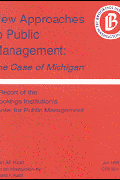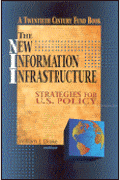In times of fiscal crisis, state and local governments often give infrastructure investments short shrift, based on the assumption that any major expenditure is simply too costly for tight budgets to bear. The trouble with this short-term logic is that it creates much larger expenses in the long run.
Michigan Gov. Rick Snyder’s state infrastructure plan rejects that common approach in favor of targeted data-driven investment in key projects that will support economic growth in the years ahead. Snyder recognizes that safe and efficient transport for both people and freight is essential to the state’s global economic competitiveness. At the same time, he understands that little if any help will be coming from the federal government in the near future. “To meet these challenges, we cannot depend on Washington,” Snyder says. “Investing today not only saves money, but builds the foundation for a reinvented 21st-century Michigan economy.”
Snyder’s “Special Message on Infrastructure” set forth his vision of Michigan as “a global trade center and logistics hub.” Achieving this vision will require large-scale investment, paid for in part through an increase in the state vehicle registration fee. By focusing the state’s limited resources on those parts of the state’s infrastructure that are crucial to economic growth―the most highly trafficked roadways and railways, major ports and airports and the border crossing between Michigan and Canada―this infrastructure plan will work to secure the greatest positive effect on the state’s economy.
The New International Trade Crossing (NITC) linking Detroit and Windsor, Ont. is a key component of Snyder’s proposed infrastructure plan. This crossing represents the busiest commercial border connecting the United States and its largest trade partner, Canada. Roughly 10,000 vehicles cross the border each day, along with 25 to 30 percent of all goods traded between the U.S. and Canada. The existing Ambassador Bridge, completed just weeks after the 1929 stock market crash, is proving unable to meet growing demand, and as Michigan’s economy recovers from the Great Recession, traffic―and expensive delays―will only increase.
Construction of the NITC, financed by a public-private partnership of the U.S. and Canadian governments and private investors, will strengthen cross-border trade relationships by speeding the exchange of goods between these two countries. As Snyder says, “Reinventing Michigan to become a center of global trade requires developing an infrastructure that will meet the modern day demands of the international economy. The people of Michigan are counting on us to put them back to work. This bridge provides an unprecedented opportunity to do that.”









Commentary
Bridges and Roads to a Better Michigan
January 19, 2012